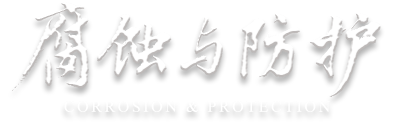Abstract:
The effects of sulfuric acid temperature and content on the corrosion resistance of Cu-Sb low alloy steel were analyzed by corrosion immersion test. The results show that the corrosion rate of the sample increased first and then decreased with the increase of sulfuric acid temperature and content. Under the condition of 60 ℃-40% (mass fraction, the same below) H
2SO
4, the corrosion rate reached the maximum, which was 11.96 mg/(cm
2·h). The low temperature and low content of sulfuric acid environment made Cu and Sb elements enrich in the rust layer, and the protective corrosion products of CuO, Sb
2O
3, Sb
2O
5 were formed on the surface of the sample, and the thickness of the rust layer was thin. With the increase of sulfuric acid temperature and content, the micro-cracks in the surface corrosion products increased and the rust layer structure became loose. Under the condition of 70 ℃-50% H
2SO
4, the steel surface was passivated to form a dense protective film, and the corrosion rate was significantly reduced.

 下载:
下载: